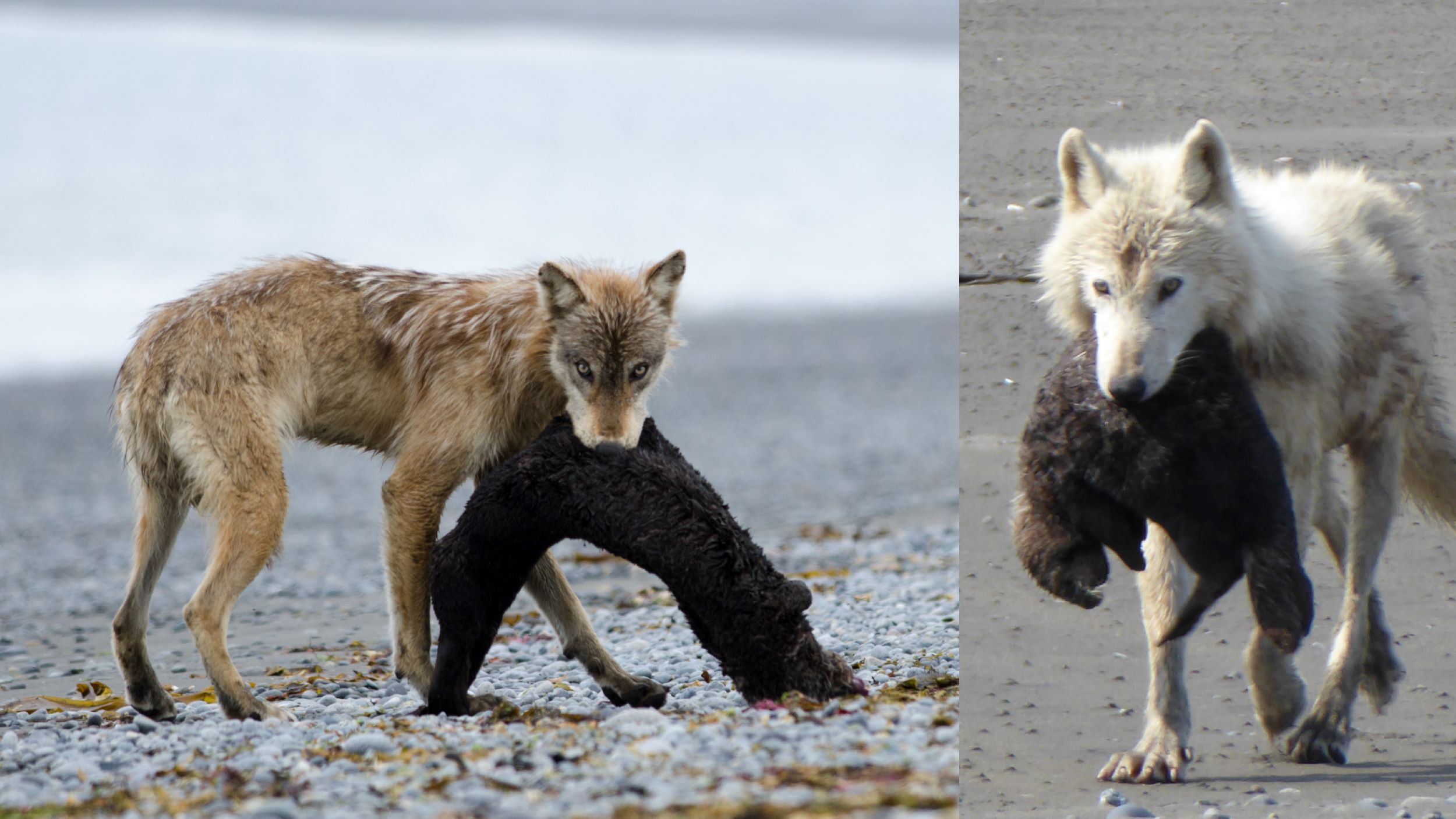Watch rare footage of wolf hunting sea otter in Alaska at low tide
Coastal wolves in Alaska have learned to kill marine mammals, and have developed a "unique" lone hunting strategy to take down prey, scientists have said.

Wolves on the Alaskan coast now regularly kill and eat sea otters and harbor seals, scientists have discovered. The finding suggests that the coastal wolves can adapt their hunting behavior — and may have developed unique strategies to prey on marine mammals when food on land is scarce.
The study into coastal wolf hunting behaviour began in 2016 when scientists spotted a solitary wolf carrying a sea otter carcass at Swikshak Bay. In 2018 and 2019, scientists again observed wolves carrying sea otter carcasses. However, whether the wolves were hunting or scavenging was unclear.
Then in 2021, three wolves (Canis lupis) were observed hunting and eating an adult sea otter (Enhydra lutris) during low tide. The researchers examined the kill site and found a pool of blood where the sea otter was likely killed.
According to the study, published Oct. 31 in the journal Ecology, the presence of blood indicates the sea otter had been alive when ambushed by the wolves, as opposed to being scavenged which would not produce fresh blood pooling.
Related: Are dogs smarter than wolves?
The findings suggest coastal wolves in Katmai may focus their hunting efforts at sites where prey is most predictable, such as tidal streams or rocky islands. The team also found that wolf predation coincided with low tide cycles — indicating they had developed an awareness of where and when the sea otters were spending time on land.
"We have seen that coastal wolves sometimes hunt alone or in partial packs and that individual wolves and packs may have different hunting strategies or target certain prey depending on where they are," Kelsey Griffin, lead author of the study and National Park Service wildlife biologist, told Live Science. "It shows that wolves are an important linkage between terrestrial and marine ecosystems. This study reframes how we think about wolves — it shows they’re not just terrestrial."
Sign up for the Live Science daily newsletter now
Get the world’s most fascinating discoveries delivered straight to your inbox.
Researchers have been monitoring the growing trend of wolves hunting marine prey on Alaska’s Katmai Coast since 2015. Their latest research builds on a study published earlier this year in the journal PNAS that revealed wolves on Pleasant Island were hunting and killing sea otters as a primary food source after eradicating the deer population.
"This is really exciting documentation of behaviors we believe have never been directly observed by scientists," Ellen Dymit, a doctoral student at Oregon State University, said in a statement. "It kind of forces us to reconsider the assumptions that underlie a lot of our management decisions and modeling around wolf populations and populations of their prey, which often assume that wolves depend on ungulates, like moose and elk."
In future work, the scientists want to expand their studies to analyze the behavior of wolves from Lake Clark National Park, Glacier Bay National Park and Kenai Fjords National Park.
"Wolves are highly intelligent so it makes sense they would adapt, although the solitary wolf hunting behavior we’re seeing are unique to coastal wolves," Griffin said. "In addition to a more diverse prey base, it is unique in that a single wolf was successful in taking down large prey such as a harbor seal compared to interior wolf activity which typically involves a pack effort to kill ungulates such as moose."
Researchers now plan to explore how sea otter density impacts the diets of wolves on an individual and pack level.
"In terms of how wolves could change the nearshore ecosystem, further study is needed," said Griffin.

Carys Matthews is a freelance writer for Live Science and has a passion for the natural world. Most recently the group digital editor of BBC Wildlife and BBC Countryfile Magazine, she writes about the outdoors, nature and health and fitness. Prior to this she has worked for a number of sports and environmental titles in the U.K.










